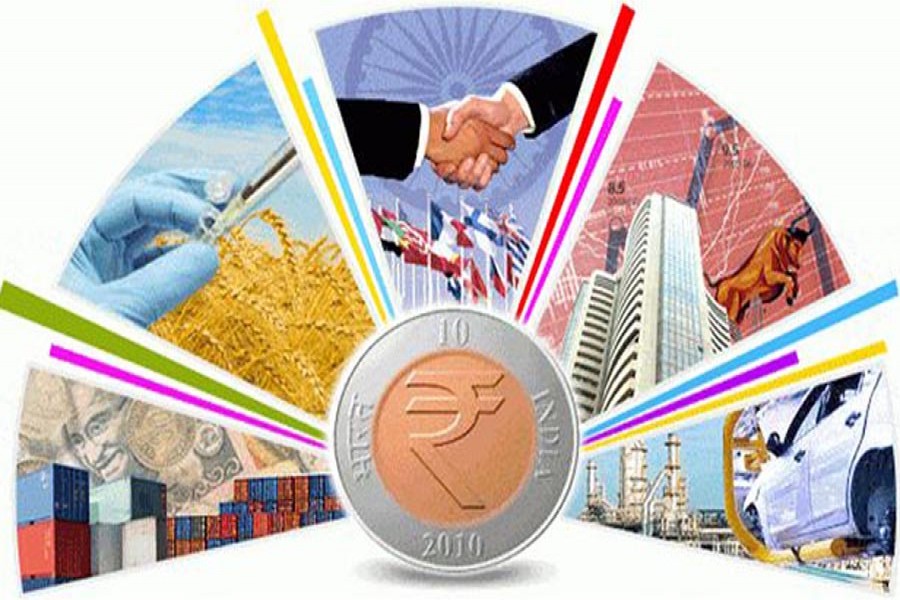A day after Indian Prime Minister Narendra Modi said India will become a $5 trillion economy by 2022, the World Bank board Friday endorsed an ambitious five-year Country Partnership Framework (CPF) for India, which aligns with New Delhi's objectives of high, sustainable and inclusive growth, according to a report by NDYV.
Aimed at supporting India's transition to a higher middle-income country by addressing some of its key development priorities -- resource efficient and inclusive growth, job creation and building its human capital -- the framework is expected to bring between $25-30 billion in financial support from the International Bank for Reconstruction and Development (IBRD), the International Finance Corporation (IFC) and the Multilateral Investment Guarantee Agency (MIGA).
"With a fast-growing economy, global stature, and its unique experience of lifting the highest number of poor out of poverty in the past decades, India is well-positioned to become a high middle-income country by 2030," said Hartwig Schafer, World Bank South Asia vice president.
"It's a five-year framework that commits the World Bank's engagement in India, both in areas where what we'll do, how we will work in these areas and the level of financial commitment. This is the first country partnership framework written with India," Junaid Ahmad, Country Director, World Bank, India, told news agency PTI in an exclusive interview.
"The CPF was preceded by a systematic country diagnostic or SCD that offered a narrative about India. What are the challenges going forward in terms of the growth of India? And what are the challenges that India faces in achieving the twin goals that the World Bank has put for itself, which is reduction in extreme poverty and the increase in shared prosperity," Mr Ahmad said.
Soon after the World Bank endorsed the CPF for India, Ahmad said, the Board recognises the incredible growth and development of India over the last several decades.
"It recognizes that India has gone from a low-income country status to a low-middle income. And now India is entering the economic transformation from low-middle income to high-middle income (country). This CPS is about how can the Bank support this transition," he said.
Noting that the systematic country diagnostic is a highly consultative document, Mr Ahmad said, the CPF is a joint document with the Indian government.
"I complement the World Bank Group for aligning the CPF with India's development and investment objectives of high, sustainable and inclusive growth," said Subhash Chandra Garg, Economic Affairs Secretary, in a statement.
Observing that the systematic country diagnostic basically said India's big story is steady growth from very low several decades back to a steady growth of seven per cent plus, Ahmad said, this document also showed that the growth is quite diversified. "Some of it is based on export. A lot of it is based on an internal consumption and investment, unlike say China, which is highly export led growth. So India's is more broad based, diversified growth path," he said.
"Over time, this growth has become more stable and is resilient. Recently there were shocks on the economy, which included demonetisation and the GST implementation and there was this fall in the growth. But it is now rebounded, and not only has it gone back to seven per cent, this quarter it is at eight per cent," Mr Ahmad said.
Based on the systematic country diagnostic goal of taking the Indian growth rate to eight per cent plus, the World Bank argued that there were several areas of engagement that were very important: natural resource management, jobs and competitiveness, and human development, he said, adding that the framework addresses these issues.
"The first point we make is India needs to unleash the power of markets and private sector. It needs to leverage private sector and in particular private capital. The challenge for the Bank is how do you take the little amount of money ultimately you're putting into the country and you go from being a lending bank to being a leveraging bank," Mr Ahmad said.
He said complementing transformational national programs, the Bank will also develop strategic state partnerships to address state-specific development priorities and support implementation capabilities at the state and the local level.
"The future of India lies in the states of India. The country's transition to high middle-income status will be determined in large part by the effectiveness of India's federal compact. In this context, an important focus of the CPF will be to deepen engagement with India's states and invest in the institutions and capabilities of the states and local governments to address their development priorities," Mr Ahmad said.
He said the Bank was going for a "Lighthouse India" approach. "Lighthouse India basically means learning from the innovation of the states and sharing with other states. We also recognise that the learning is what India also has to offer the rest of the world. As it goes from low-income to middle-income to high-middle-income, its learning over its development path is going to be very valuable for other nations," he said.
"The Indian economy has evolved to a level where the private sector can be counted on to close large developmental gaps. Through this the CPF, the WBG will help India leverage additional resources from the private sector to help India realize its full potential," said Jun Zhang, Country Head, IFC, India.


